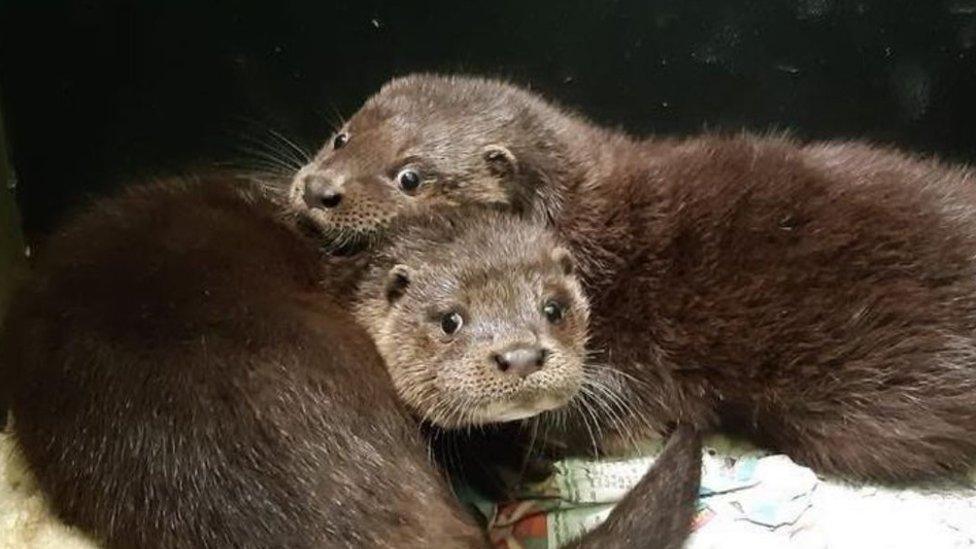A surfboard-stealing otter is on the run
- Published
Watch: Otter attempts to steal surfboard
If you were to take a swim in the clear blue waters surrounding Santa Cruz, California, in recent days, you may have encountered an unlikely predator. Small and dark, whiskered and fluffy, she has developed a knack for theft and a taste for surfboards.
Her name is 841. She is a sea otter.
This week, the US Fish and Wildlife Service announced it had launched a multi-agency search for Otter 841 in an attempt to capture and rehome her, after observing her "concerning and unusual behaviour".
Teams from the US and state wildlife agencies have been sent out to sea, armed with a bait surfboard, but so far, she has evaded apprehension.
Otter 841's capture will mark the end of her brief reign of terror and delight along the balmy coast of Santa Cruz - a story of fearlessness, crime and, possibly, a southern sea otter's family legacy.
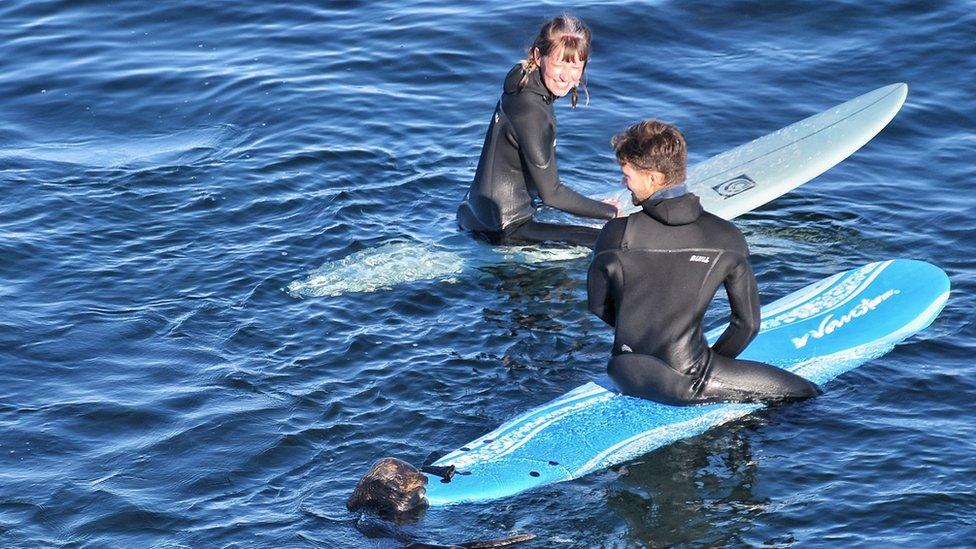
Local observers have seen her taste a variety of boards before settling on her favourite

For weeks this summer, Otter 841 has been approaching surfers at sea, stealing and even damaging their equipment - leaving large bite marks on brightly painted surfboards.
Local surfers "have never seen anything like it", Santa Cruz photographer Mark Woodward told the BBC. Mr Woodward, who has been following Otter 841's journey, once saw her "ride a decent wave" on a stolen board.
It's very strange, he said. "Sea otters have never gone near surfers before."
The complete tale of Otter 841 begins a little over five years ago, with a different otter, Otter 723 (otters who are released into the environment get numbers for names, those who stay in captivity get names).
Living in the wild in the central coast of California, Otter 723 was fed by humans and soon became habituated to people, and their snacks.
After she began approaching kayaks and paddleboards in search of food, Otter 723 was re-captured and sent to live at the Marine Wildlife Veterinary Care and Research Center in Santa Cruz. There, scientists soon realised she was pregnant with a female pup. That pup was Otter 841.
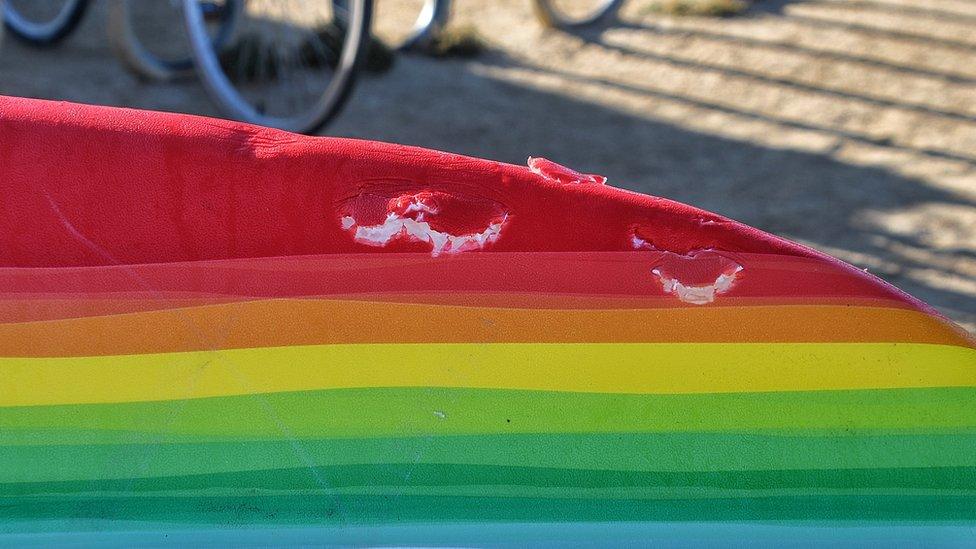
Otter 841 makes her mark on the surfboard
She was raised in the Monterey Bay Aquarium, where researchers took precautions to stop her mother's love of humans from being passed on. Otter 841's caretakers would wear black ponchos and welding masks - nicknamed the 'Darth Vader outfit' - whenever they fed her, said Kevin Connor, spokesperson for the aquarium.
"The facilities that have permission to care for otters have to follow really strict guidelines. We don't want them to have that positive association with people," Mr Connor said. "We want them to stay wild, we don't want them to depend on us."
And in her first year back in the sea, Otter 841 swam, ate and floated around California's central coast without incident, alongside a small population of other otters.
Hunted to near extinction by the fur trade, just around 3,000 southern sea otters remain alive today. While they once resided throughout North America's Pacific coast - all the way from north-western Mexico to Alaska - they are now found only in a narrow band of ocean in California's central coast.
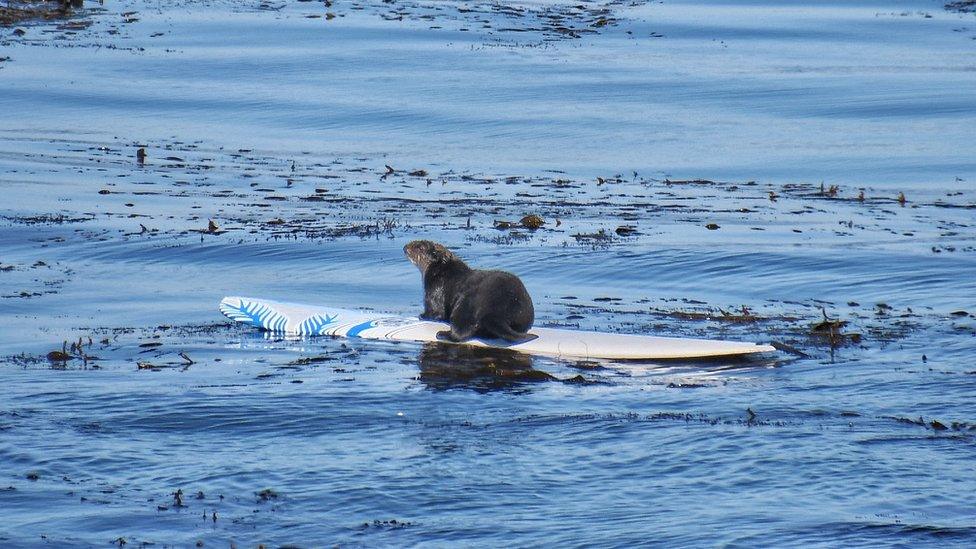
Otter 841 has been seen catching some waves
Smart and wily, otters are top predators of invertebrates, foraging and eating a quarter of their own body weight in food every day - how Otter 841 was likely getting by on her own.
"She's very healthy, she's a big girl," photographer Mark Woodward said, recalling a time he watched her hang out in the water, "eating crab after crab".
But then reports emerged of her hanging out with surfers, visits that soon escalated.
Last week, Mr Woodward captured photos of an apparently serene 841, bobbing along the water peacefully atop a stolen surfboard. But she appeared to become increasingly aggressive, with videos showing her accosting swimmers, wrestling surfboards out of their hands, and hopping on boards herself before dragging them away.
And Otter 841 seemed to develop a particular preference for foam surfboards, frequently used by beginners, and seemingly better for an otter to sink her teeth into.
"On Sunday, as soon as she finished feeding she took off into the surfers," Mr Woodward said. "She bit every single board and picked the rainbow one."
The behaviour was highly unusual. Most southern otters have a strong fear of humans, a fear that helps keep them safe.
By Monday, the US Fish and Wildlife Service, the California Department of Fish and Wildlife and the Monterey Aquarium decided Otter 841 had to be brought in, for the safety of herself and for others.
Scientists at the aquarium are still unsure why she, like her mother, seemed immune to this fear. She may have had an early positive interaction with humans. Perhaps she was fed. But so far it's just speculation.
Could it just be strong otter family genes? "I don't think so," Mr Connor said.
There's no telling when Otter 841 will be found. When she is, wildlife authorities will place her in an aquarium.
"[They will] find her a home where she can live with some of the best seafood for dinner every day and be an ambassador for her species," Mr Connor said, perhaps a fitting role for the most famous thieving otter around.
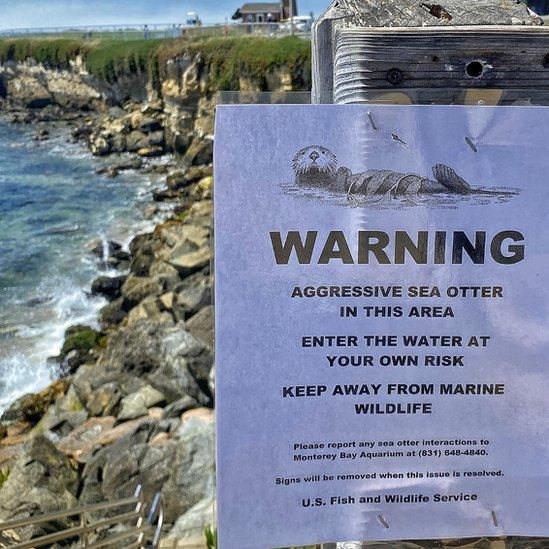
Authorities are still on the hunt for Otter 841
Related topics
- Published16 June 2023
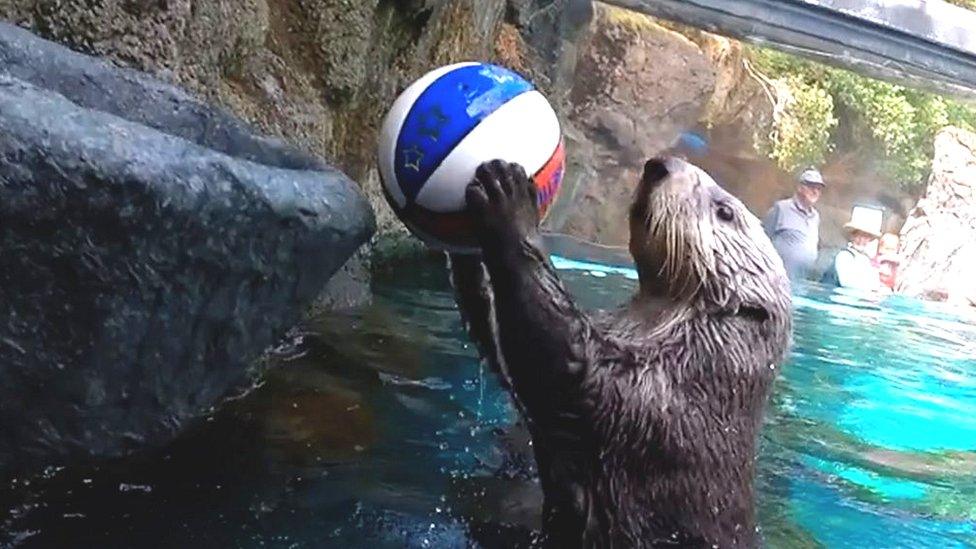
- Published13 July 2023

- Published21 July 2022
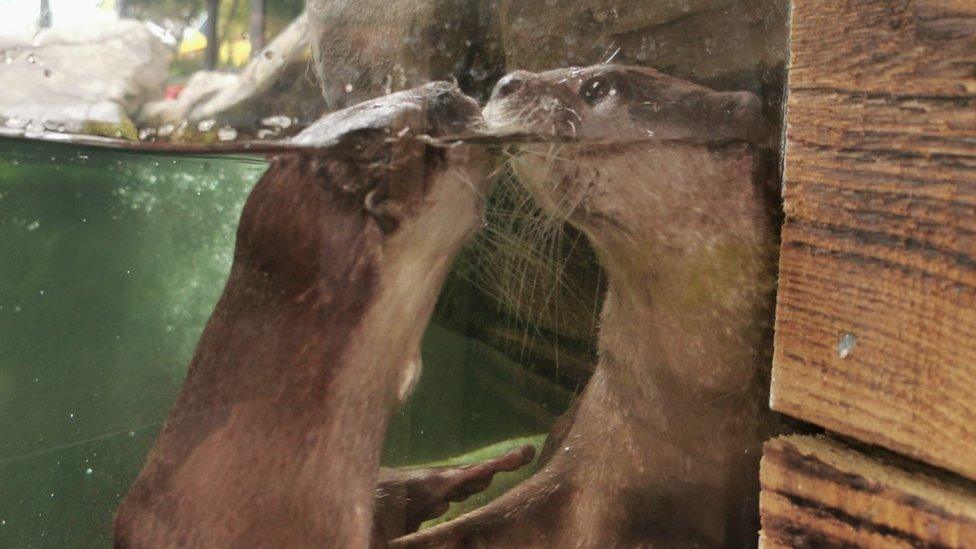
- Published13 February 2022
